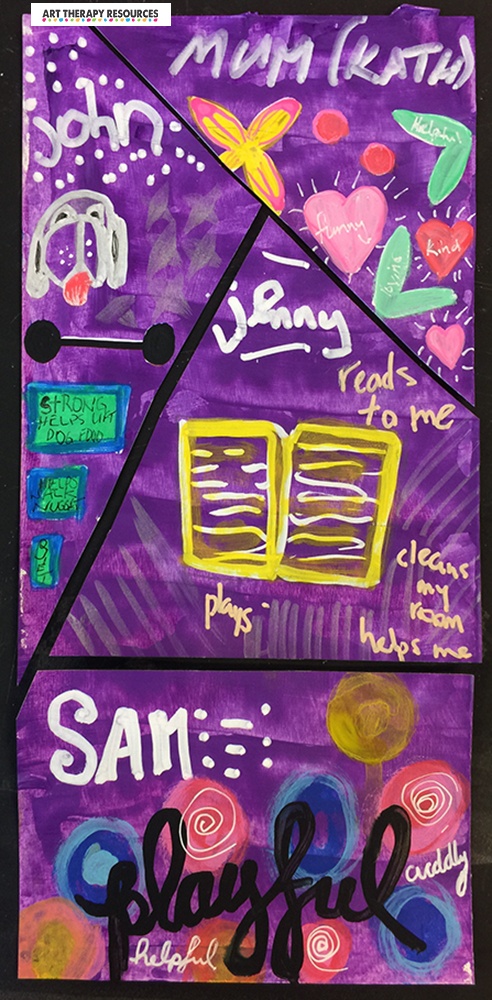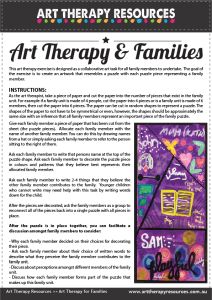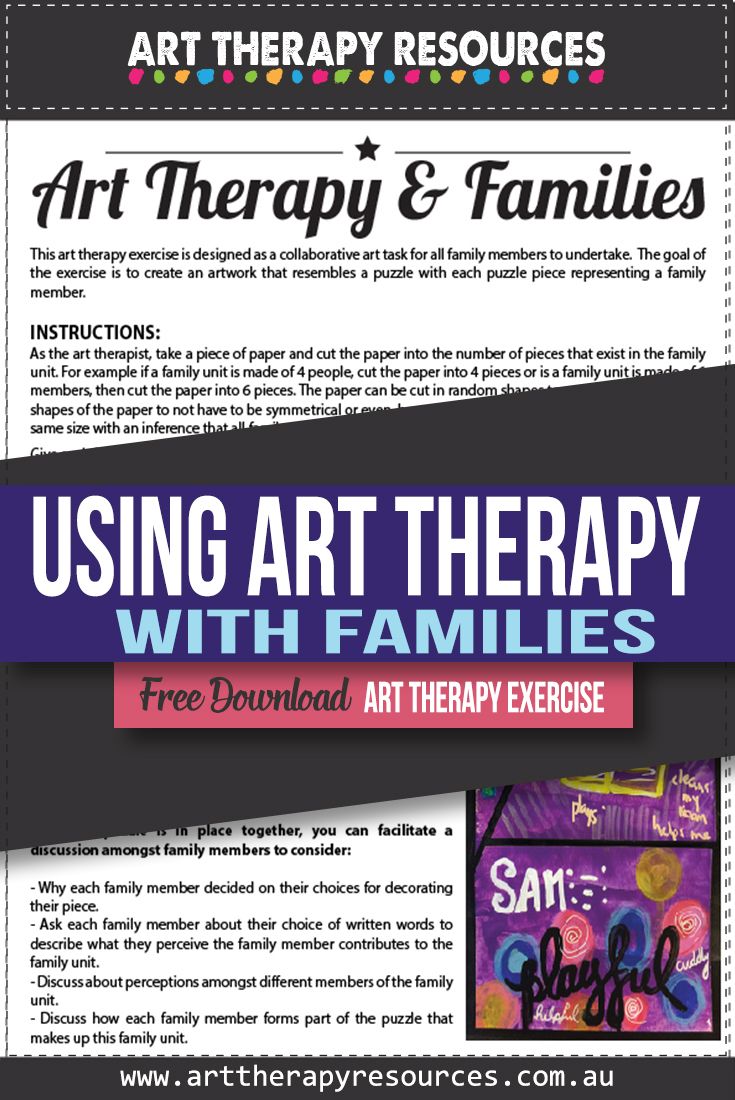THIS POST INCLUDES:
1. Family Dynamics
2. Types of family structures
3. Family and art therapy
4. Free Download Art Therapy Exercise
FAMILY DYNAMICS
Family therapy is an extension of individual therapy with the inclusion of all family members whether that be a partner, spouse, child, extended family, blended family, or siblings.
Family therapy seeks to understand family dynamics and how these dynamics impact each individual.
Some of the most common family dynamics that create tension and conflict are:
- Family trauma – abuse
- Intergenerational trauma
- Family experiences – moving, new family members, bereavement, divorce, illness, infidelity
- Addictions within the family
- Developmental transitions amongst family members
Therapy can help families understand the various dynamics that exist within the family unit and gain a better understanding of how each family member identifies and labels themselves within the family unit.
Each family member perceives their position with the family as different from each other. These different perceptions can create conflict and ongoing stress that can benefit from therapy.
FAMILY STRUCTURES
In society, the definition of family is evolving and can involve two people functioning as a couple or a broader family structure. Some of the different types of family structures include:
- Parent and child (birth, foster, and adoptive)
- Step families or blended families
- Extended families – eg. Multi-generational living in the same house
- Siblings
- Couples
Family structures vary greatly. Some family structures may have close or distant proximity. Some may have few or many family members and some family structures may include people that are not biologically related, however, the relationship dynamics form a family unit.
Many people may consider a family structure to primarily consist of parents and children, however, culture, religion, and individual experiences can greatly expand the makeup of a family structure.
FAMILY AND ART THERAPY
Working with family members that are the same age is usually an easier task because the therapist can communicate at the same level, however, when children are involved, the sessions need to take into account the different developmental stages and the different levels of verbal understanding.
Art therapy can be a beneficial conduit for therapy with families because creating art is an activity that enables all family members to participate at a similar level of communication.
Art enables family members to work together on tasks and develop an overall sense of cooperation between each family member. This can help break down barriers of communication that may exist and present as hurdles to developing a collaborative approach to improving the family dynamics.
Engaging in art activities also shifts the focus of problem-solving from the intellectual and logical approach to the creative, imaginative, spontaneous approach where each member of the family can bring new ideas to resolving interpersonal conflict.
Family members can become defensive or even regressive in therapy if they are required to eloquently express their innermost thoughts and feelings through verbal communication. Art therapy can help break these barriers of defense down and instead develop an openly expressive format through creating art that doesn’t rely on providing a verbal response to justify or strengthen a position the family member may hold about how the family unit is impacting their experience.
Verbal communication may make some family members feel censored in terms of expressing their point of view, however, creating art can bypass this feeling of censorship when personal expression is is encouraged.
As an art therapist, you may experience some resistance by adult family members who may view art activities as playtime for children. Parents and caretakers may also feel vulnerable while engaging in art activities as they may think it makes them look silly engaging in play, especially when a family may be attending therapy for a serious reason such as tragedy or trauma.
This may be an opportunity for you to explore these misgivings with the family member around their vulnerabilities. It may also provide an opportunity to discuss how children can communicate within the realms of play. For children, art therapy can also provide the additional benefits of holding their attention and developing important cognitive and sensorimotor skills.
Given the misgivings some family members may have about the usefulness of art in therapy sessions, it’s best to start the sessions with art tasks that are collaborative and easy to undertake. These art activities can focus more on the process of working together and less on exploring complex emotions that may feel unsettling at the start.
ART THERAPY EXERCISE
This art therapy exercise is designed as a collaborative art task for all family members to undertake. The goal of the exercise is to create an artwork that resembles a puzzle with each puzzle piece representing a family member.
INSTRUCTIONS:
- As the art therapist, take a piece of paper and cut the paper into the number of pieces that exist in the family unit. For example, if a family unit is made of 4 people, cut the paper into 4 pieces or is a family unit is made of 6 members, then cut the paper into 6 pieces. The paper can be cut in random shapes to represent a puzzle. The shapes of the paper to not have to be symmetrical or even, however, the shapes should be approximately the same size with an inference that all family members represent an important piece of the family puzzle.
- Give each family member a piece of paper that has been cut from the entire sheet.
- Allocate each family member with the name of another family member. You can do this by drawing names from a hat or simply asking each family member to refer to the person sitting to the right of them.
- Ask each family member to write that persons name at the top of the puzzle shape.
- Ask each family member to decorate the puzzle piece in colours and patterns that they believe best represents their allocated family member.
- Ask each family member to write 2-4 things that they believe the other family member contributes to the family. Younger children who cannot write may need help with this task by writing words down for the child.
- After the pieces are decorated, ask the family members as a group to reconnect all of the pieces back into a single puzzle with all pieces in place.
- After the puzzle is in place together, you can facilitate a discussion amongst family members to consider:
- Why each family member decided on their choices for decorating their piece.
- Ask each family member about their choice of written words to describe what they perceive the family member contributes to the family unit.
- Discuss perceptions amongst different members of the family unit.
- Discuss how each family member forms part of the puzzle that makes up this family unit.
Below is an example of a family of 4 (Mum, stepdad, 2 small children) who completed that exercise.

FREE DOWNLOAD: Art Therapy Exercise
SIGN UP below to download the FREE Art Therapy Exercise for Families.

BUILD YOUR ART THERAPY REFERENCE MATERIALS:
Pin this image to your Pinterest board.

SHARE KNOWLEDGE & PASS IT ON:
If you’ve enjoyed this post, please share it on Facebook, Twitter, Pinterest. Thank you!
